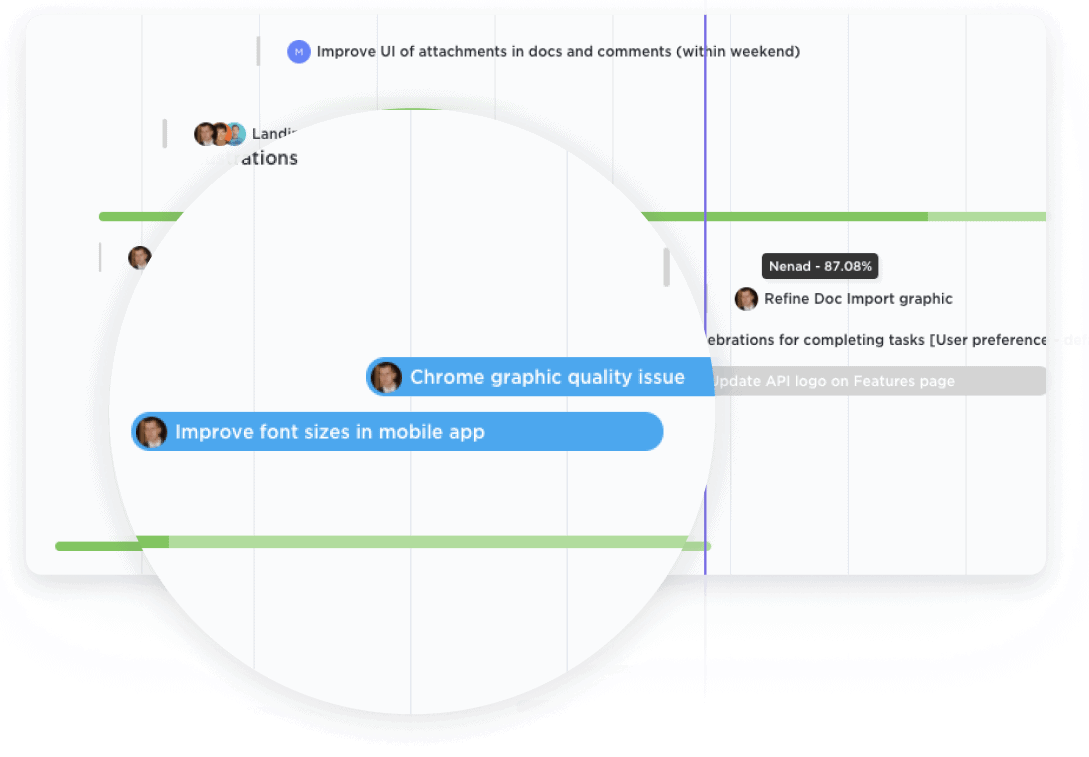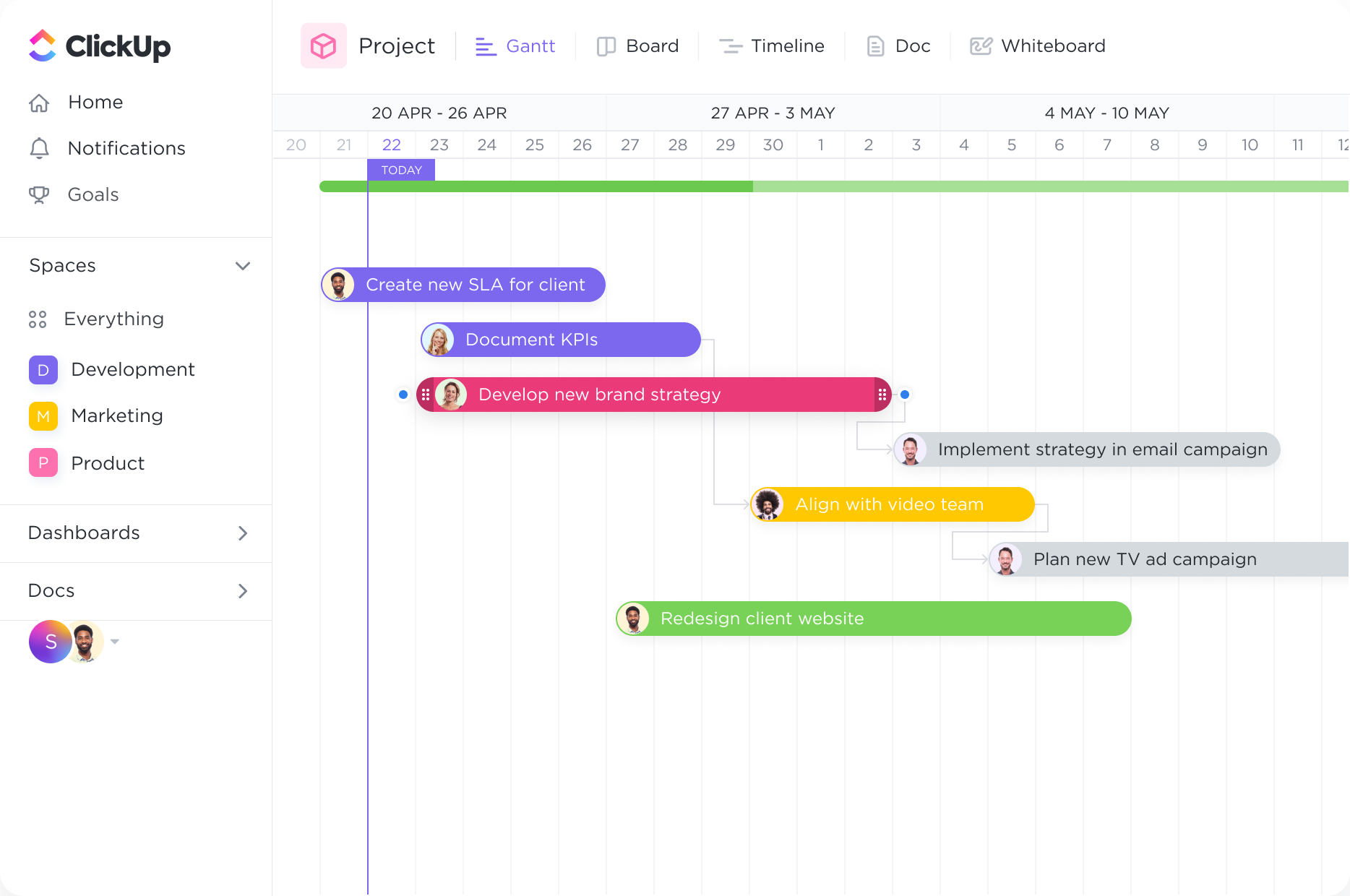Manage all of your projects in one place.
Get a bird's-eye view of all Spaces, Projects, Lists, and tasks in one Gantt chart. With clear coloring options, you can easily see what work is happening and where.

Streamline your book publishing projects with ClickUp's powerful Gantt Chart software. Visualize your timelines, track progress, and allocate resources efficiently using our intuitive interface. With ClickUp, you can easily create custom Gantt Charts specifically designed for book publishers, ensuring that every step of your publishing process is organized and on track. Take control of your projects and maximize productivity with ClickUp's Gantt Chart software today.
Free forever.
No credit card.

Trusted by the world’s leading businesses
Get a bird's-eye view of all Spaces, Projects, Lists, and tasks in one Gantt chart. With clear coloring options, you can easily see what work is happening and where.

Organize how you see your tasks with quick sorting. Create cascading views with a single click to easily see what important tasks are coming next.
Managing the timeline for publishing a book involves coordinating various tasks and deadlines. A Gantt chart provides a visual representation of the entire process, from manuscript editing to cover design, printing, and marketing. This allows book publishers to track progress, identify potential bottlenecks, and ensure that each step is completed on time for a successful book launch.
Book publishing involves collaboration among authors, editors, designers, and marketers. With a Gantt chart, publishers can allocate tasks to team members, assign responsibilities, and set deadlines. This promotes effective communication, streamlines workflow, and ensures that everyone is aware of their role in the publishing process.
Efficiently managing resources is essential for book publishers to meet deadlines and control costs. A Gantt chart helps publishers allocate resources such as editors, designers, and printing facilities based on the project's timeline. This prevents resource conflicts, optimizes resource utilization, and ensures that the necessary resources are available when needed.
Editing and proofreading are critical stages in the book publishing process. A Gantt chart allows publishers to outline the editing workflow, including multiple rounds of edits, revisions, and proofreading. This helps track the progress of each chapter or section, ensures timely completion of editing tasks, and maintains quality standards throughout the book.
Creating a marketing plan is crucial for the success of a book. With a Gantt chart, publishers can schedule marketing activities such as book cover reveals, author interviews, social media campaigns, and book signings. This visual representation enables publishers to coordinate marketing efforts, track progress, and ensure that promotional activities align with the book's release date.
Coordinating the printing and distribution of books requires careful planning and execution. A Gantt chart helps book publishers schedule printing timelines, coordinate with printing vendors, and manage the distribution process. This ensures that books are printed and delivered on time, avoiding delays in reaching bookstores and readers.
By utilizing Gantt charts in these various aspects of book publishing, publishers can streamline their processes, improve collaboration, and ensure that books are published efficiently and on schedule.
Gantt chart software can help book publishers by providing a visual representation of project timelines and dependencies, allowing for better project planning and coordination. It enables the tracking of tasks and deadlines, ensuring timely publication of books. Additionally, it facilitates resource allocation and collaboration among team members, leading to increased efficiency and improved decision-making in the publishing process.
Gantt chart software can help book publishers manage their publishing schedules more effectively by visually representing the timeline of tasks and dependencies involved in the publishing process. It allows publishers to track the progress of each task, allocate resources efficiently, and identify potential bottlenecks or delays. This enables publishers to make informed decisions, adjust schedules if necessary, and ensure timely delivery of books to readers.
Gantt chart software can be beneficial for book publishers by providing features such as task dependencies, resource allocation, and timeline visualization, which help in managing editorial deadlines, coordinating author and editor schedules, and tracking the progress of book production stages.